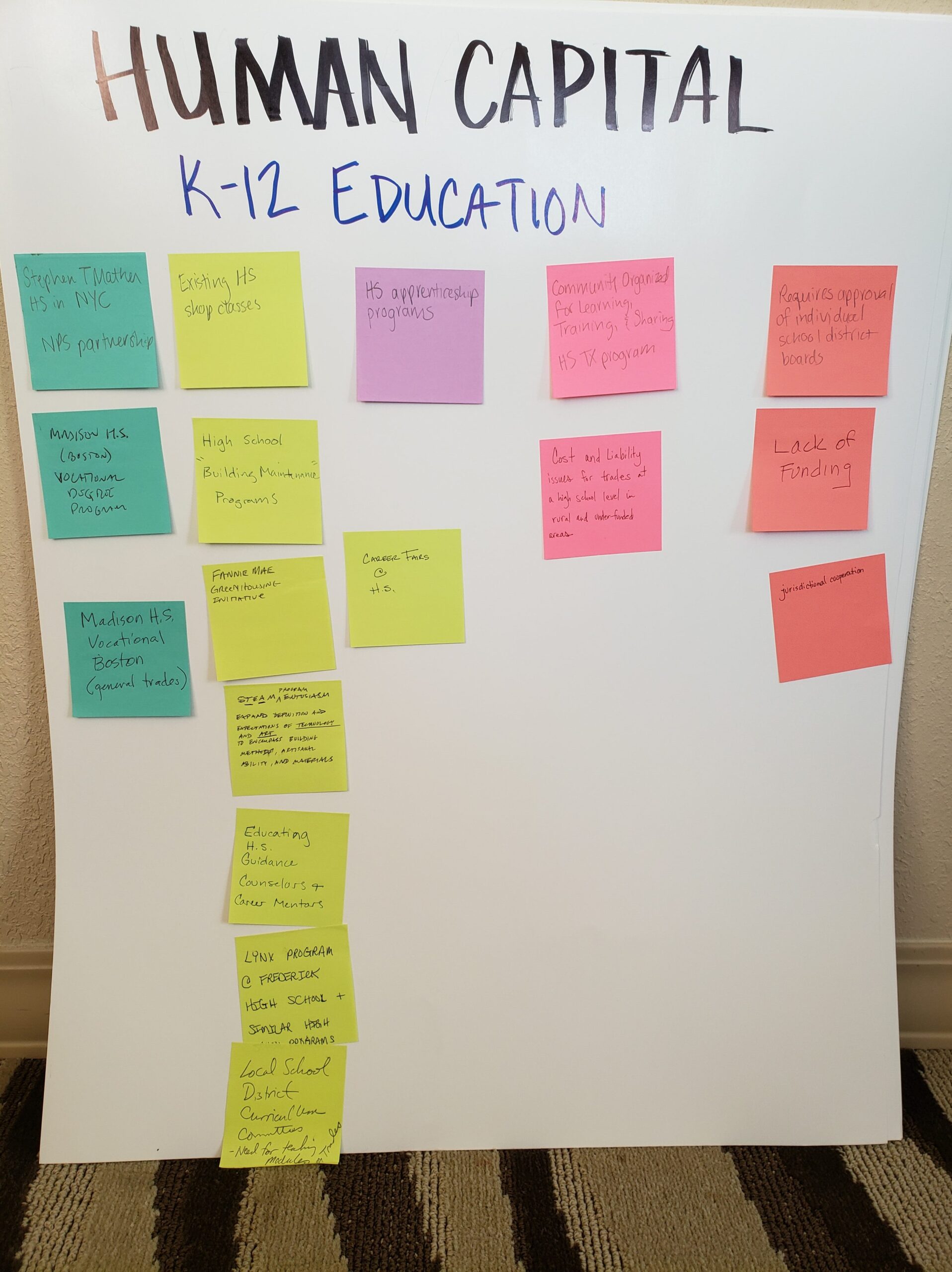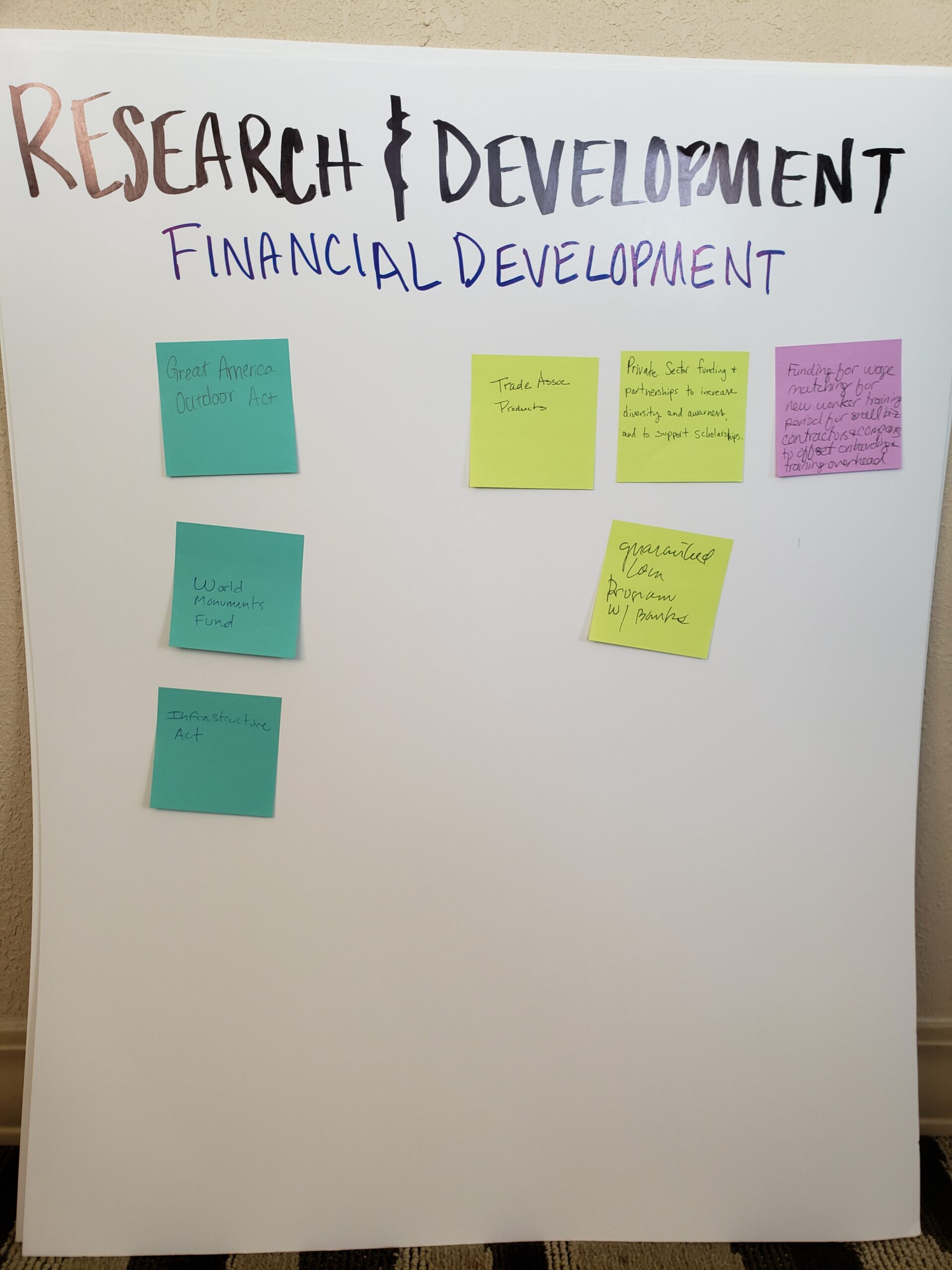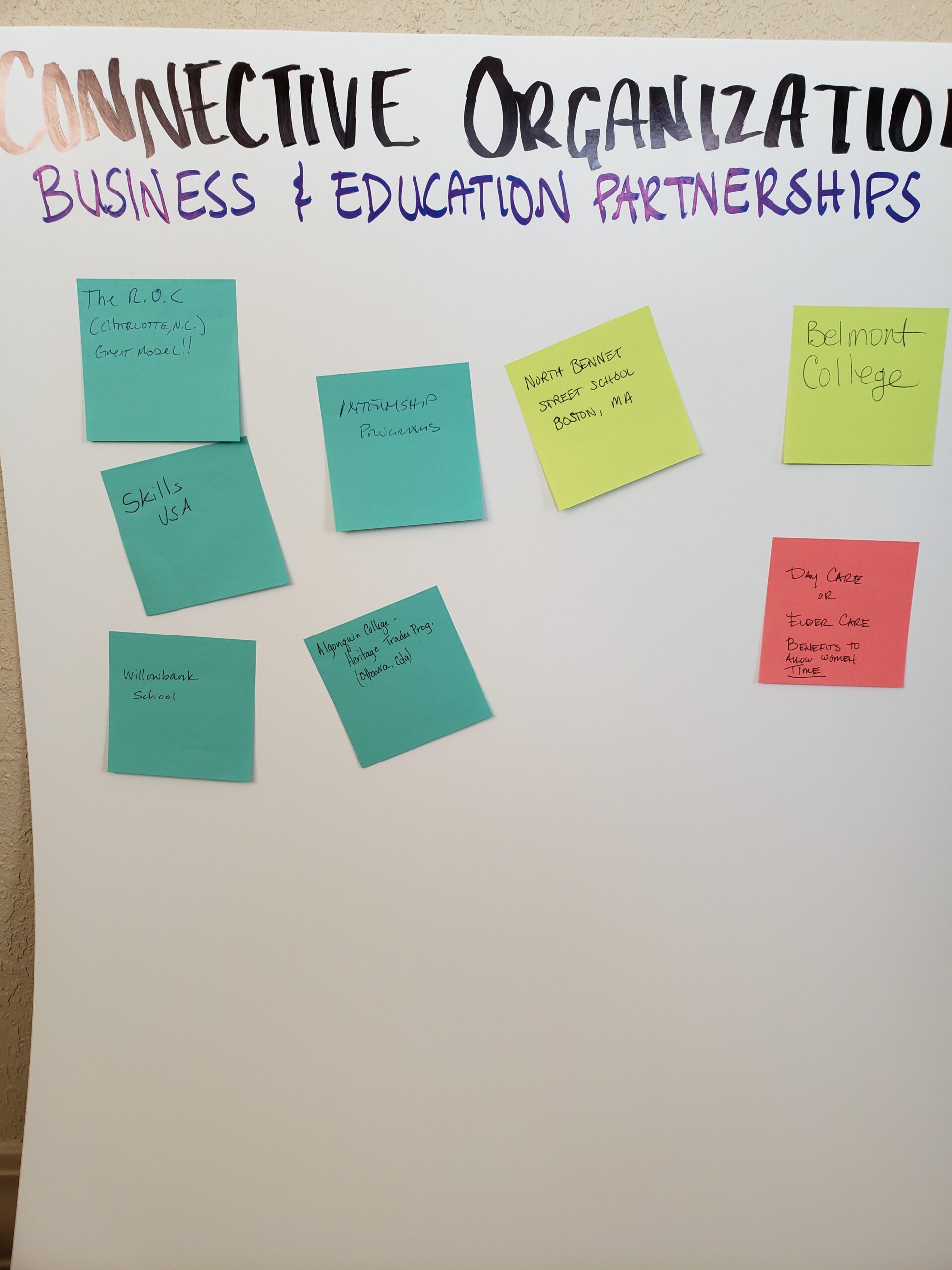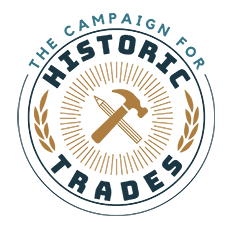In early November, The Campaign hosted a day-long workshop at the Association for Preservation Technology’s annual conference in Detroit, Michigan. The workshop brought together educators, trainers, employers, program directors, and supporters from across the globe. Together, we explored systems of training and how we can design programs for success.
The workshop centered on the experience of students and administrators. Participants role-played as students of different programs and navigated hurdles they faced during training. Each of these students had unique needs based on where they were on the career path, individual circumstances, and the program design. In the afternoon, we used the morning’s discussion as a launchpad to talk about program administration–how do we design programs for student success? What do programs need to achieve this?
The framework for this discussion was the workforce development funnel. On average, each step on the career path for a skilled tradesperson loses 3/4 of its audience. To produce one journey-level worker, we need 256 people aware of the career. Of those 256, 64 will move into an activity that engages that interest. Of those 64, 16 will enter a training program. Of those 16, 4 will enroll in an apprenticeship. Of those 4, only one will become a professional journey worker. Each step is supported by educational learning–a fundamental component of any program.
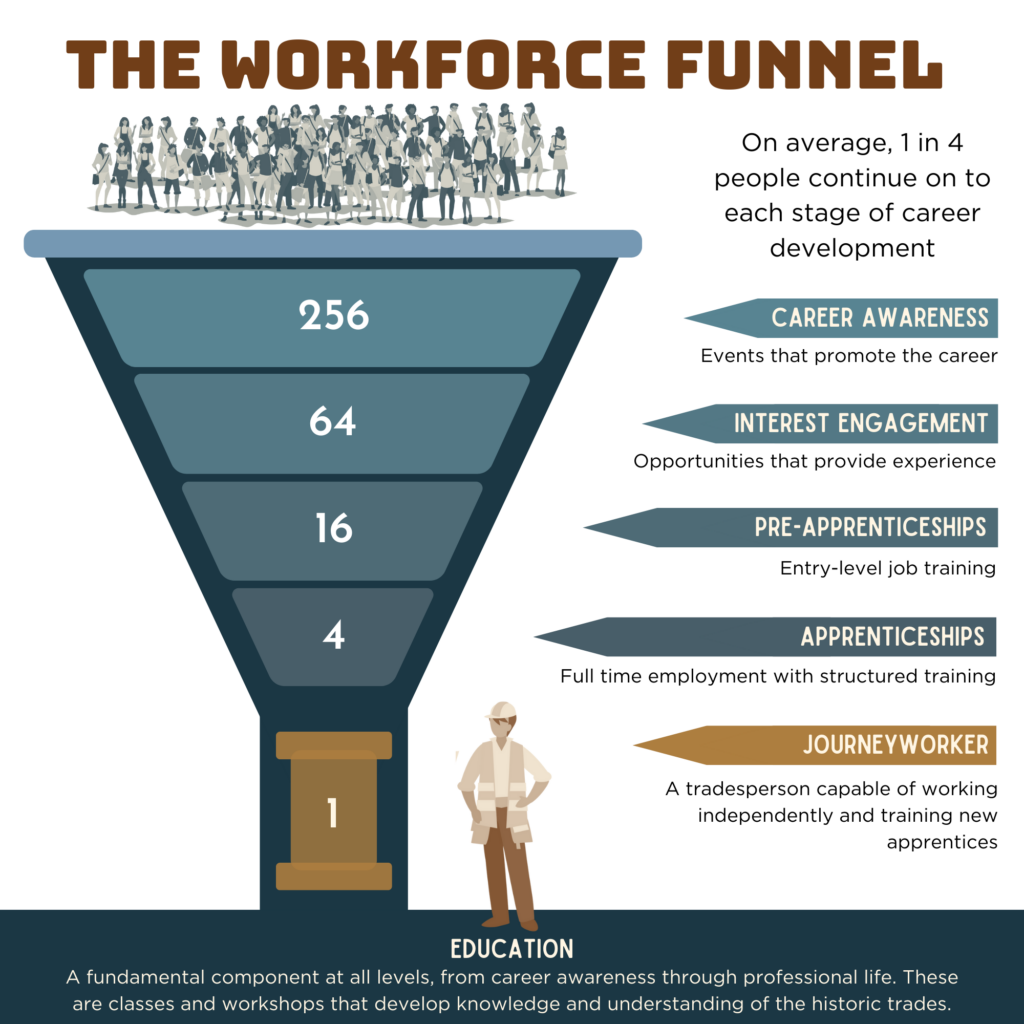
Three guest speakers presented about their program design, function, audience, and where they fit in the career funnel:
- Pablo Ojeda-O’Neill, the Chairman of the Board of Governors of the Centro de Conservación y Restauración de Puerto Rico (CENCOR), discussed the apprenticeship programs developed by and for CENCOR.
- Jessica Gordon, Training Administrator for the National Park Service’s Historic Preservation Training Center (HPTC), presented on the HPTC’s pre-apprenticeship style Traditional Trades Advancement Program.
- Jason Whitehead, Executive Director of HistoriCorps, presented on their volunteer interest engagement model and their more-recent workforce development pre-apprenticeship programs through JobCorps.
Collectively, the workshop participants noted the lack of connective tissue between different programs and employers. They agreed that the following steps could help build these connections and improve retention rates in the field:
- Mentorships
Deemed a valuable way for individuals to improve understanding of the career field, problem-solve technical tasks, and create allies to help advise and see people through difficult situations. - Career Coaching
Distinct from mentorship, everyone determined that a large gap existed between training and employment and there needs to be a designated entity to help introduce people to career options, navigate training and education, and help connect people to employers. Right now, that burden lies on trainers who already have their hands full with teaching and administration. - Affinity Groups
In addition to mentorships and professional navigation, everyone agreed that a network of peers has a powerful impact on helping people maintain their professional careers–identify-based groups, skill-focused groups, and alumni groups from particular programs–and that these are noticeably absent in the trades. It was suggested to utilize existing networks to help foster these smaller groups and to identify alumni of different programs.
We ended the day with asset mapping. Throughout the years, the siloing of important ideas and experiences has caused programs to repeat processes unnecessarily, sometimes contributing to their closure. The process of asset mapping identifies existing resources, people, and programs that can help support professional training. This will help us build a Tool Kit on how to start and grow training programs.
We have made this open and available to anyone to contribute and utilize. The workshop participants began this process–you can help continue it. Contribute to our virtual asset mapping board to help us build our collective knowledge.
